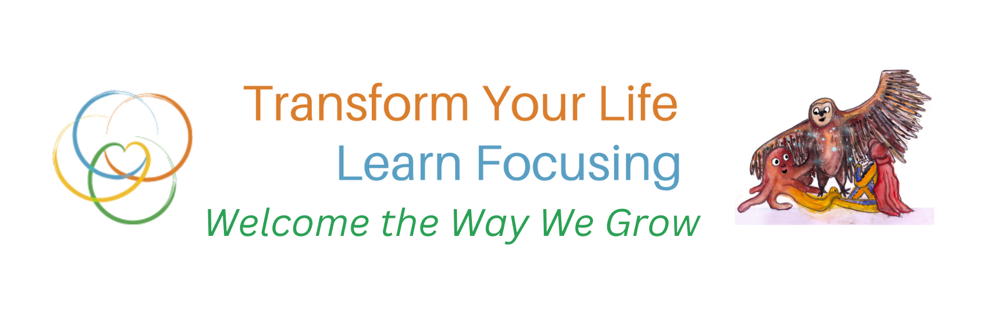Transform Your Life, Learn Focusing, Welcome the Way We Grow
Neuroscience and Focusing
Neuroscience has a lot to say that correlates with our experience of Focusing. It’s much more than I could ever do justice to on this page. We do learn and explore these concepts via our own experiencing in my classes. I personally have found that understanding the neuroscience helps me move into relationship more easily. It is useful for my own Focusing, in guiding others and especially helpful in daily life.
I integrate neuroscience even more into Smartview Stories where we explore living a Focusing way of life.
I share below a crossing I did between Gendlin's Types of Theories and LH-RH neuroscience which continues to expand in many ways. For instance, we have two amygdalae, one functioning from a RH perspective and one from a LH perspective. When we move into our sympathetic system from just one perspective, we are less likely to get stuck than when both sides shift.
Neuroscience Resources
If you would like to explore the LH-RH neuroscience concepts I mention above more, I highly recommend this short RSA ANIMATE video about Our Divided Brain by Iain McGilchrist HERE.
Books:
In a book of unprecedented scope, McGilchrist presents a fascinating exploration of the differences between the brain’s left and right hemispheres, and how those differences have affected society, history, and culture. He draws on a vast body of recent research in neuroscience and psychology to reveal that the difference is profound. In 2021, McGilchrist published a followup two-volume book called The Matter with Things. Similar to what I say above, in this book he suggests that in order to understand ourselves and the world we need both hemisphere's; that they are far from being in conflict; and that the brain’s right hemisphere plays the key role in bringing them together.
Your Resonant Self and Workbook by Sarah Peyton
Your Resonant Self, includes foundational neuroscience concepts and client stories for paving a resonant practice path to self-compassion. Your Resonant Self Workbook adds the neuroscience of unconscious contracts, which supports an even deeper movement into self-warmth.
Focusing Coordinator Jan Winhall introduces a new strategy to treat addiction that brilliantly integrates Gendlin’s classic concept of a felt sense with Polyvagal Theory.
Therapy in the Age of Neuroscience: A Guide for Counsellors and Therapists
Chapters in this guide cover the neuroscience underlying key aspects of therapy such as relationships, emotion, anxiety, trauma and dissociation, and the mind-body connection.
Hey Warrior (and other books) by Karen Young for children
Karen Young believes kids can do amazing things with the right information. Her books help kids understand anxiety.
This has high reviews - described as a one of a kind adventure that introduces the neuroscience of social-emotional learning in a fun, interactive way.
Incorporating concepts from all of the above materials, our books utilize three Inner Companions based on neuroscience to model what community life could be like when we welcome what is going on inside of us to daily life.
Andrew Huberman, Ph.D., is a neuroscientist and professor at Stanford School of Medicine. He has made numerous significant contributions to the fields of brain development, brain function and neural plasticity, which is the ability of our nervous system to rewire and learn new behaviors, skills and cognitive functioning. In 2021, Dr. Huberman launched the Huberman Lab podcast. The podcast is frequently ranked in the top 10 of all podcasts globally and is often ranked #1 in the categories of Science, Education, and Health & Fitness.
I use this to supplement and improve the efficiency of my Focusing process. If you know, for example, that your process is asking you to improve your sleep, listen to Huberman's sleep podcasts to understand better what is happening during your sleep. Try what most resonates and proceed to experiment and fine-tune your body's process.
How to Shift Habits with Focusing, a blog post by Annette DuBreuil
"When I acknowledge that change will continue to take practice and that embodied transformation isn’t 100% permanent, I notice that my body relaxes. My perfectionist part can step back as it’s ok if I fluctuate sometimes. And that’s a relief, because as I’ve said, I’m not always steady. "




